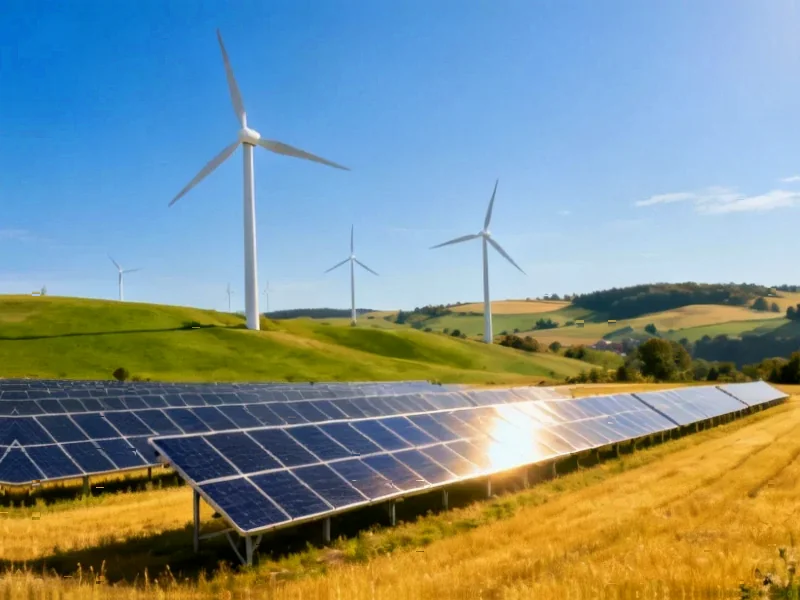According to The Economist, China burned 4.9 billion tonnes of coal in 2024, representing more than half of global coal consumption and setting a new national record. The country generated nearly one-third of the world’s electricity, with its electrical energy production growing by 4,273 terawatt-hours over the past decade—equivalent to 90% of America’s total 2024 electricity generation. Despite rapid renewable energy deployment, China is struggling to meet its Paris Agreement carbon intensity targets, with renewable curtailment rates increasing significantly in 2024. The analysis highlights critical infrastructure challenges, including limited inter-provincial power trading, fixed electricity pricing, and inadequate market mechanisms for managing renewable intermittency. While China plans to triple its ultra-high-voltage transmission lines by 2050 and leads in battery storage deployment, the transition requires fundamental market reforms that won’t be fully implemented until 2030.
The Grid Modernization Imperative
China’s renewable energy deployment numbers are undeniably impressive, but they mask a deeper structural problem: the country’s electrical grid was designed for a centralized, predictable coal-based system. The fundamental architecture of China’s power infrastructure reflects an era when generation followed demand through dispatchable fossil fuel plants. Today’s reality of intermittent solar and wind generation requires a completely different approach to grid management that China’s current system struggles to accommodate. The International Energy Agency’s research on grid modernization consistently shows that countries with the most successful renewable integration have invested heavily in grid flexibility and digitalization—areas where China still lags despite its hardware advantages.
The Provincial Power Paradox
One of the most significant barriers to China’s decarbonization isn’t technical but political and economic. Provincial officials have strong incentives to build local coal capacity rather than rely on power from other regions, creating a fragmented system where only 20% of electricity crosses provincial boundaries. This provincial protectionism creates massive inefficiencies, as renewable-rich western provinces cannot effectively transmit power to demand-heavy coastal regions. The situation resembles early 20th-century America before the creation of regional transmission organizations, where local monopolies and protectionist policies prevented optimal resource sharing. Breaking these provincial silos requires not just physical transmission lines but fundamental changes to how local officials are evaluated and incentivized.
The Market Design Challenge
China’s electricity market design represents perhaps the most difficult hurdle. The current system of fixed-price, long-term contracts works well for predictable coal generation but fails completely for intermittent renewables. European markets have evolved over three decades to handle complex day-ahead and intraday trading, with prices reflecting real-time supply and demand conditions. China’s planned 2030 timeline for national market reform seems dangerously slow given the pace of renewable deployment. The government’s fear of price spikes disrupting industrial production is understandable, but this caution comes at the cost of continued coal dependence. Historical precedents from electricity market deregulation in other countries show that well-designed transitions can manage price volatility while delivering cleaner, more efficient systems.
The Curtailment Conundrum
Rising renewable curtailment rates—solar increasing from 3% to 5.7% and wind from 3.9% to 6.6%—signal a system under stress. This isn’t just wasted clean energy; it represents billions in squandered investment and delayed decarbonization. The problem stems from a fundamental mismatch: renewable generation patterns don’t align with the grid’s operational requirements. Unlike Europe or California, where sophisticated market mechanisms help balance supply and demand, China’s rigid system forces renewable generators to dump power when it can’t be immediately consumed. This situation creates a vicious cycle where poor integration undermines the economic case for further renewable investment, potentially slowing the energy transition just when it needs to accelerate.
Storage and Transmission Realities
While China’s investments in battery storage and ultra-high-voltage transmission are commendable, they represent only partial solutions. Battery storage addresses short-duration intermittency but cannot solve seasonal variations in renewable generation. Transmission lines can move power across vast distances but create single points of failure and face significant land-use and environmental challenges. The National Renewable Energy Laboratory’s research on grid storage emphasizes that no single technology can solve the integration challenge—it requires a portfolio approach including demand response, improved forecasting, and flexible generation. China’s focus on hardware solutions while neglecting market and regulatory frameworks risks creating an impressive but inefficient system.
The Political Economy of Coal
The deeper challenge lies in China’s political economy of energy. The 2021-2022 power shortages triggered a reflexive return to coal plant construction, demonstrating how quickly decarbonization ambitions can be derailed by energy security concerns. The coal industry represents not just generation capacity but jobs, local government revenue, and political stability. Capacity payments to coal plants for reliability insurance create a financial lifeline that undermines renewable competitiveness. Unlike the European Union’s emissions trading system, which has successfully reduced coal generation, China’s carbon market lacks a meaningful cap and distributes most credits for free. Until China addresses these structural advantages for coal, renewable growth will supplement rather than replace fossil generation.
The Path Forward
China’s decarbonization success ultimately depends on three parallel transformations: physical grid modernization, market design evolution, and political economy reform. The technical challenges, while substantial, are solvable given China’s engineering capabilities and manufacturing scale. The market design issues require careful experimentation and gradual implementation to avoid disruptive price spikes. But the political economy challenges may prove most difficult, requiring a fundamental rethinking of how energy security is defined and achieved. China’s ability to rapidly deploy renewable hardware is impressive, but true decarbonization requires equally rapid progress on the less visible but equally critical systems of governance, markets, and regulation that determine how that hardware is actually used.




